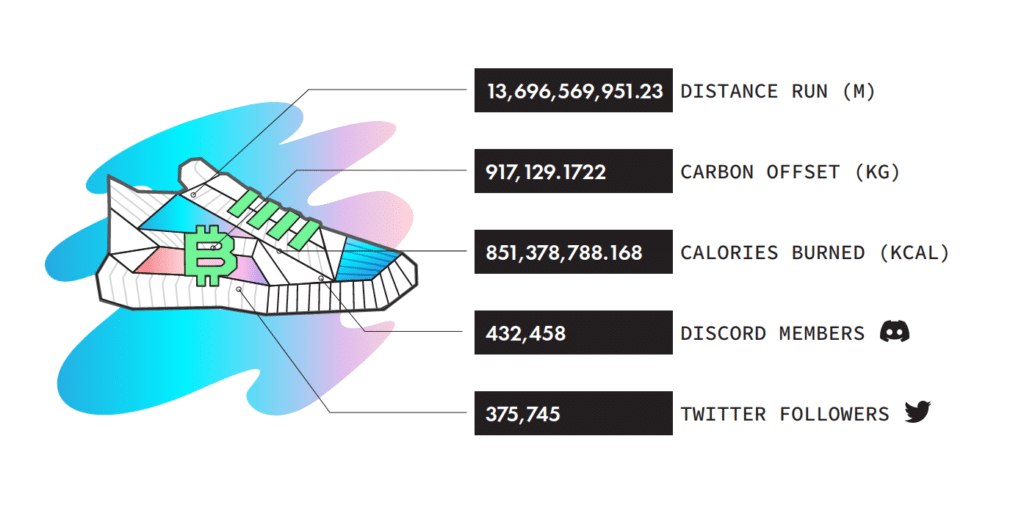STEPN has four kinds of sneakers and these all have different optimal speed settings. The walker is ideal for those moving between 1km/hr and 6km/hr, while the jogger is for those moving between 4km/hr and 10km/hr. The runner is for those moving between 8km/hr and 20km/hr, while the trainer is for those moving between 1km/hr and 20km/hr. But, does it influence the payout if I run faster or slower, or what kind of sneaker I have?
It is actually not very hard to understand this. The most important is that you move within the optimal speed of your given sneaker. If you do that, then you will receive the maximum payout available to you at the moment (based on your efficiency level and so on). In other words, if you use a walker sneaker and move at approximately 4km/hr, you will be in the optimal zone and receive the maximum payout. But, if you should move at 8km/hr, you will be outside the optimal range, and it will decrease your GST payout. The bigger the difference between your speed and the optimal speed range, the less you will receive in GST for your activity.
What about the Trainer sneaker? Does it have an ideal speed?
But, what about the trainer sneaker? It has an optimal speed range of 1km/hr to 20km/hr? Does it matter whether you move at 2km/hr or at 15km/hr? Or what is the truth about this?
I have personally used a trainer sneaker for quite a while right now, and I must say that my personal experience tells me that the difference in payout is minimal, and it might very much deal with the daily STEPN variable that causes some difference in payouts from day to day, and not really about the speed.
So, as I have used the same sneaker with the same efficiency level on several days, I have seen payouts between 21.5GST and 23GST, sometimes walking and sometimes running. It has been quite random whether I received more or less for the walking and the running, so my experience tells me that the runner is perfect for those who just want a shoe that is suitable for both running and walking. How come? Because if you really move, you will always be within the optimal range, making your payouts the best possible. It also feels nice to know that you don’t have to worry about running to fast or too slow (as you might do with a jogger or a runner).
One more bonus with the trainer is that it actually gives a higher payout than the walker, jogger, and runner in general, meaning that this is really a great sneaker for those who plan on using STEPN a lot.
What do I mean that a Trainer gives a higher payout?
If you take a look at the following article about the efficiency attributed in STEPN you will see that the Trainer curve gives a higher payout with the same efficiency value compared to the three other sneakers. The runner is the sneaker moving closest to the trainer, but it can be seen that the trainer seems to be the best sneaker for highest payouts.
Do you get the point? The most important is to find a sneaker that is suitable for your speed. But, if you plan on combining both running and walking, or if you are running at a speed between 7km/hr and 12 km/hr, you will struggle with both the runner and the jogger as you often fall outside the optimal speed category, and in such situations, the trainer is by far the easiest and most comfortable choice.
What is your experience? What are your thoughts? Do you have any further STEPN comments or questions? Use the comment field below!

